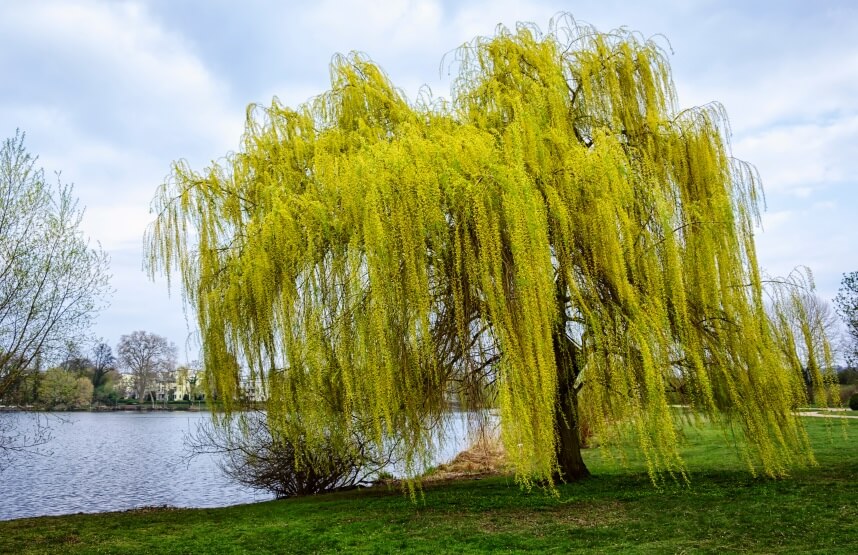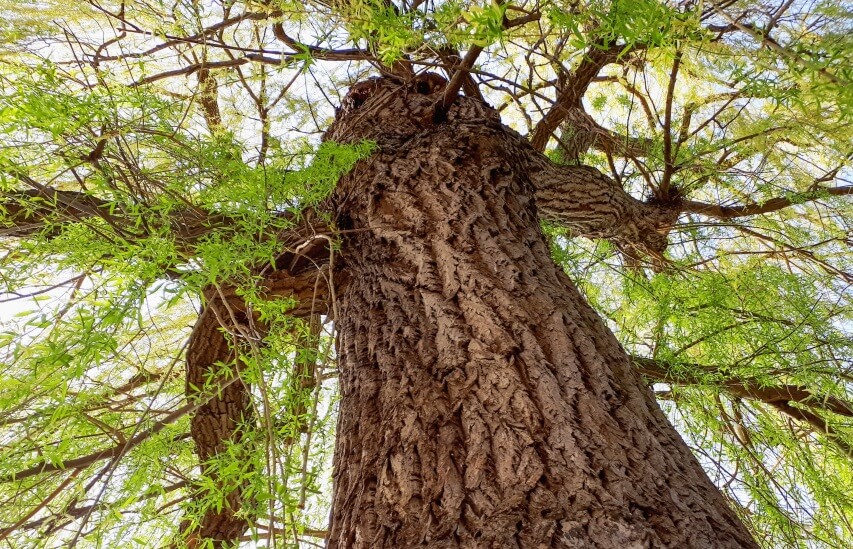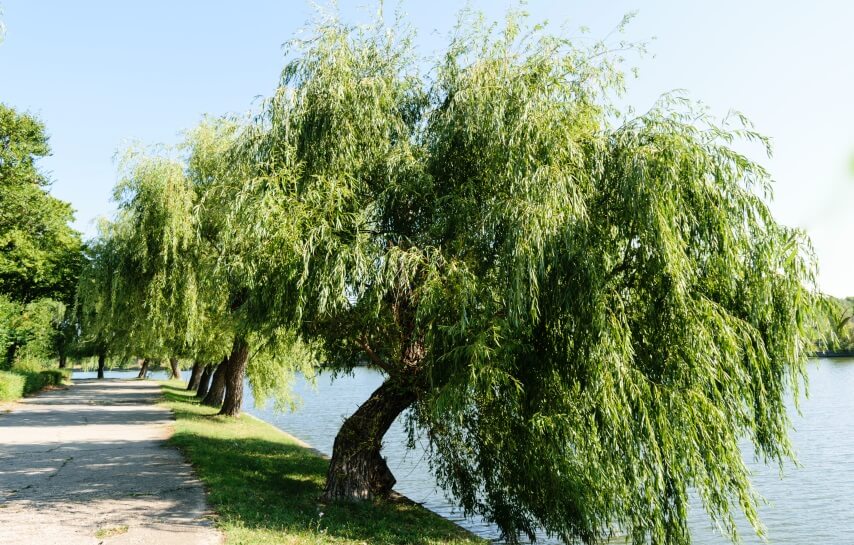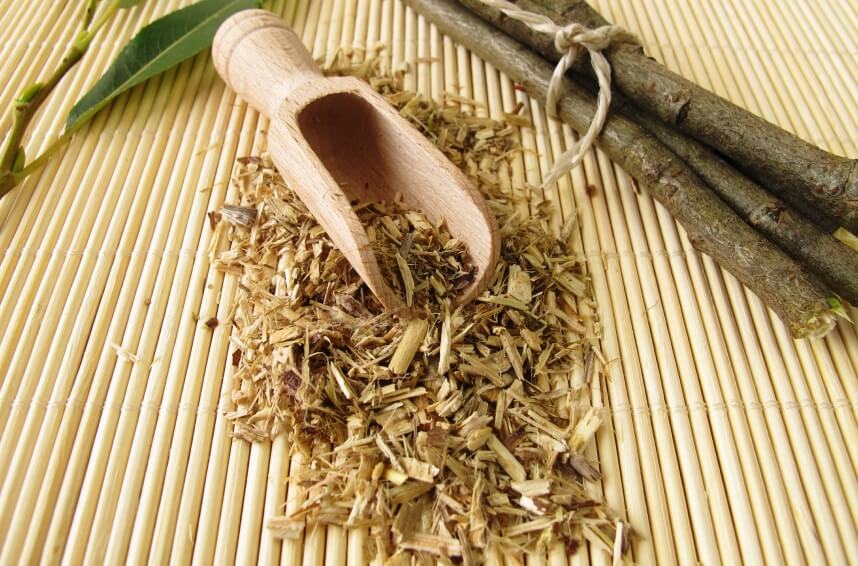Willow (Salix spp.) trees have long been significant in folklore and the natural world. With their graceful branches and soothing presence near water bodies, these magnificent trees have captured the imagination of many. Beyond their aesthetic appeal, willow trees harbor abundant therapeutic and ecological benefits. This article will delve into the various benefits of willow trees, highlighting their healing properties and role in promoting environmental sustainability.
If you are interested in this topic, you can also read
<<Loquat Tree Benefits>> and <<Oak Tree Benefits>> articles.
Uses And Benefits Of Willow Trees
Natural Medicine
Willow trees are renowned for their medicinal properties, primarily attributed to the presence of salicin—a chemical compound that is converted into salicylic acid in the human body. Salicylic acid is well-known for its pain-relieving and anti-inflammatory properties, making it a vital ingredient in the development of Aspirin and other pain medications. Historically, indigenous cultures have utilized willow tree extracts to alleviate headaches, reduce fevers, and treat various inflammatory conditions [1].
Ecosystem Stabilization
Willow trees are vital in stabilizing ecosystems, especially near water bodies. Their extensive root systems help prevent soil erosion and minimize the risk of flooding by absorbing excess water from the surrounding area. This crucial function protects the tree itself and safeguards nearby habitats, ensuring the viability of numerous plant and animal species [2].
Water Purification
The deep-rooted nature of willow trees enables them to draw up groundwater from significant depths. This process helps their survival and purifies water by filtering out impurities and excessive nutrients. By absorbing nutrients such as nitrogen and phosphorus, willow trees effectively prevent excess runoff and eutrophication in nearby water bodies, thus improving overall water quality [3, 4].
Wildlife Habitat
Willow trees provide a rich and diverse habitat for various animal species. The dense foliage, robust branches, and ample cover created by these trees offer shelter to nesting birds, small mammals, and insects.
Furthermore, willow trees serve as a significant food source, as their catkins attract pollinators such as bees and butterflies. This, in turn, contributes to the intricate biodiversity within ecosystems [5].
Contaminant Remediation
Willow trees possess the unique ability to extract pollutants, such as heavy metals and toxic chemicals, from the soil through their roots. This phytoremediation process aids in soil cleanup and assists in the restoration of contaminated sites.
Aesthetic And Recreational Value
The striking beauty of willow trees has made them a popular choice for landscaping and public parks. Their gracefully drooping branches, vibrant green leaves, and calming presence near water bodies create an enchanting visual spectacle. Additionally, willow trees offer shaded areas and peaceful retreats, inviting individuals to relax, meditate, and engage in recreational activities such as fishing or picnicking.
Willow Bark Benefits
With its long history of medicinal use, willow bark holds a special place in the realm of natural remedies. Derived from various species of the willow tree (genus Salix), this botanical marvel has been embraced for its potential health benefits. This part of the article aims to highlight the uses and health benefits of willow bark, backed by scientific evidence and traditional knowledge.
Historical Background And Traditional Uses
Willow bark has been widely recognized for its healing properties since ancient times. The early Egyptians used it as an analgesic, while the ancient Greeks and Romans valued its anti-inflammatory effects. Native American tribes also utilized willow bark for pain relief and reducing fever. These rich cultural traditions set the foundation for exploring its potential benefits.
Source Of Salicylates
One of the primary components found in willow bark is salicylates, which are natural compounds with anti-inflammatory and pain-relieving properties. Salicylates help inhibit the production of inflammatory molecules and reduce pain sensations in the body. In fact, the discovery of salicylic acid led to the synthesis of modern-day Aspirin.
Pain Relief And Anti-Inflammatory Action
Clinical studies indicate that willow bark extract can effectively alleviate pain associated with various conditions, such as arthritis, backache, and headache. Researchers believe that the salicylates present in willow bark work similarly to Aspirin and provide relief from inflammation and pain. Furthermore, these natural compounds may have fewer side effects compared to synthetic pain medications [6].
Osteoarthritis Management
Willow bark has shown promise in helping manage symptoms of osteoarthritis, a degenerative joint disease. Several studies have revealed that consuming willow bark extract can decrease pain and improve physical function in individuals with arthritis. The anti-inflammatory effects of willow bark can help reduce joint swelling and stiffness associated with this condition [7].
Cardiovascular Health
Beyond its pain-relieving qualities, willow bark may offer benefits for cardiovascular health. Research suggests that the salicylates in willow bark can help prevent blood clot formation, thereby reducing the risk of heart attack and stroke. However, it is important to consult a healthcare professional before using willow bark as a cardiovascular aid, especially if you are already taking blood-thinning medications [8].
Other Potential Uses
Besides its well-known analgesic properties, willow bark has been explored for its potential role in managing acne, reducing fever, and supporting weight loss efforts. While more research is needed to establish definitive conclusions, anecdotal evidence and traditional wisdom have attributed these benefits to the use of willow bark [9, 10, 11].
Willow Leaves Benefits
While most people associate willows with their gracefully swaying branches and gentle whispers in the wind, the leaves of these remarkable trees are equally noteworthy. Here, we will explore the diverse range of willow leaves benefits, backed by references from reliable sources.
Natural Pain Relief
One of the most well-known benefits of willow leaves is their natural pain-relieving properties. These leaves contain a compound called salicin, which is converted to salicylic acid in the body. Salicylic acid is an essential component in several over-the-counter pain medications. Studies have shown that consuming willow leaves or using willow leaf extracts may help alleviate pain associated with conditions such as headaches, backaches, and arthritis [12].
Anti-inflammatory Effects
In addition to their pain-relieving qualities, willow leaves exhibit potent anti-inflammatory properties. The salicin in willow leaves acts as a natural anti-inflammatory agent, helping reduce swelling and inflammation in various body parts. This makes willow leaves a valuable option for managing inflammatory conditions like tendonitis and bursitis [13, 14].
Skin Health
Willow leaves are not limited to internal health benefits; they also provide remarkable advantages for skin health. The presence of tannins in willow leaves makes them beneficial for treating skin conditions such as acne and eczema. The tannins act as astringents, helping to cleanse the skin, control excess oil production, and reduce inflammation. Willow leaf extracts can be found in various skincare products, including cleansers, toners, and creams [15].
Fever Reducer
Historically, willow leaves were used as natural fever-reducing agents due to their inherent antipyretic properties. When consumed, the salicylic acid derived from willow leaves helps to lower body temperature and promote comfort during feverish episodes. However, it is worth noting that professional medical advice should be sought for managing fevers, especially in severe cases [16].
Natural Hair Care
The benefits of willow leaves extend to hair care as well. Willow leaf extracts possess conditioning properties that promote healthier, more manageable hair. These extracts help moisturize the scalp, soothe irritation, and enhance hair elasticity, leaving it soft, shiny, and voluminous [17].
Willow Wood Benefits
Willow wood, derived from the branches and stems of willow trees, has been used for centuries due to its versatile applications and various benefits. From traditional medicinal uses to modern-day applications, willow wood offers numerous advantages. Some notable benefits of willow wood, supported by references from reputable sources, are as below:
Environmental Sustainability
Willow wood is a highly renewable resource that can be harvested without causing significant damage to the environment. It grows rapidly, with some varieties capable of regenerating up to 10 feet annually. As a fast-growing tree, willow wood has been used in sustainable building practices, including raw materials for furniture, flooring, and other wooden products.
Medicinal Properties
Willow wood contains salicin that converts into salicylic acid in the body, known for its potent anti-inflammatory and pain-relieving properties. This natural compound has been utilized to treat headaches, fever, inflammation, and pain, similar to the effects of Aspirin. Additionally, it has been used in traditional medicine to relieve symptoms associated with rheumatic disorders and osteoarthritis [18].
How To Make Willow Bark Tea
Throughout history, various cultures have relied on natural remedies for their health and well-being. One such example is willow bark tea, derived from the bark of the willow tree. Traditionally used for its anti-inflammatory and pain-relieving properties. Still, willow bark tea continues to be a popular choice for those seeking a natural alternative to pharmaceuticals. In this section, we will explore the process of making willow bark tea, its potential health benefits, and precautions to remember.
Gathering And Preparing Willow Bark:
Identifying The Willow Tree:
– The willow tree can be recognized by its slender leaves, long branches, and distinctive catkins.
– Common species used include white willow (Salix alba) and black willow (Salix nigra). Consult a field guide or seek local expertise to identify these trees correctly.
Harvesting Willow Bark:
– Choose a young and healthy willow tree, preferably around three to five years old.
– Collect bark from branches or the trunk when the sap rises in the early spring.
– Use a sharp knife to peel the outer bark carefully, targeting areas where it easily separates.
Drying And Storing Willow Bark:
– Lay the bark in a well-ventilated area with good airflow, away from direct sunlight.
– Allow the bark to dry naturally for at least one to two weeks until it becomes brittle.
– Store the dried bark in an airtight container away from humidity to preserve its potency.
Willow Bark Chips
Brewing Willow Bark Tea:
Ingredients And Equipment:
– Dried willow bark (approximately 1 tablespoon per 8 ounces of water)
– Filtered water
– Pot with lid
– Strainer or cheesecloth
– Optional: honey or lemon for flavoring
Preparation Steps:
- Add water: Pour 8 ounces of filtered water into a pot.
- Add willow bark: Place the desired amount of dried willow bark into the pot.
- Bring to a boil: Cover the pot with a lid and bring the water to a gentle boil.
- Simmer: Reduce the heat and let the mixture simmer for 10-15 minutes.
- Strain: Pour the tea through a strainer or cheesecloth to remove debris or bark fragments.
- Additional flavoring: Add honey or lemon if desired.
- Serve and enjoy: Pour the tea into a cup and savor its flavor and potential benefits.
Health Benefits And Precautions
Willow bark tea is believed to relief pain and inflammation and aid in reducing fever, soothing gastrointestinal issues, and promoting general well-being. However, further research is needed to substantiate these claims.
Precautions And Considerations
– Willow bark tea should not be consumed by individuals allergic to Aspirin or those with salicylate sensitivity [19].
– It is not recommended for children, pregnant women, or individuals with certain health conditions without consulting a healthcare professional.
– Willow bark tea should not replace prescribed medications, and it is essential to seek medical advice before using it as a treatment.
Conclusion
With their numerous benefits, willow trees are more than just captivating elements of the natural scenery. From their role in traditional medicine to their positive influence on ecosystems and the environment, these trees stand tall as essential guardians of our planet. As we continue to appreciate and foster the growth of willow trees, may we recognize and nurture the invaluable contributions they make to our well-being and the preservation of our natural world.















